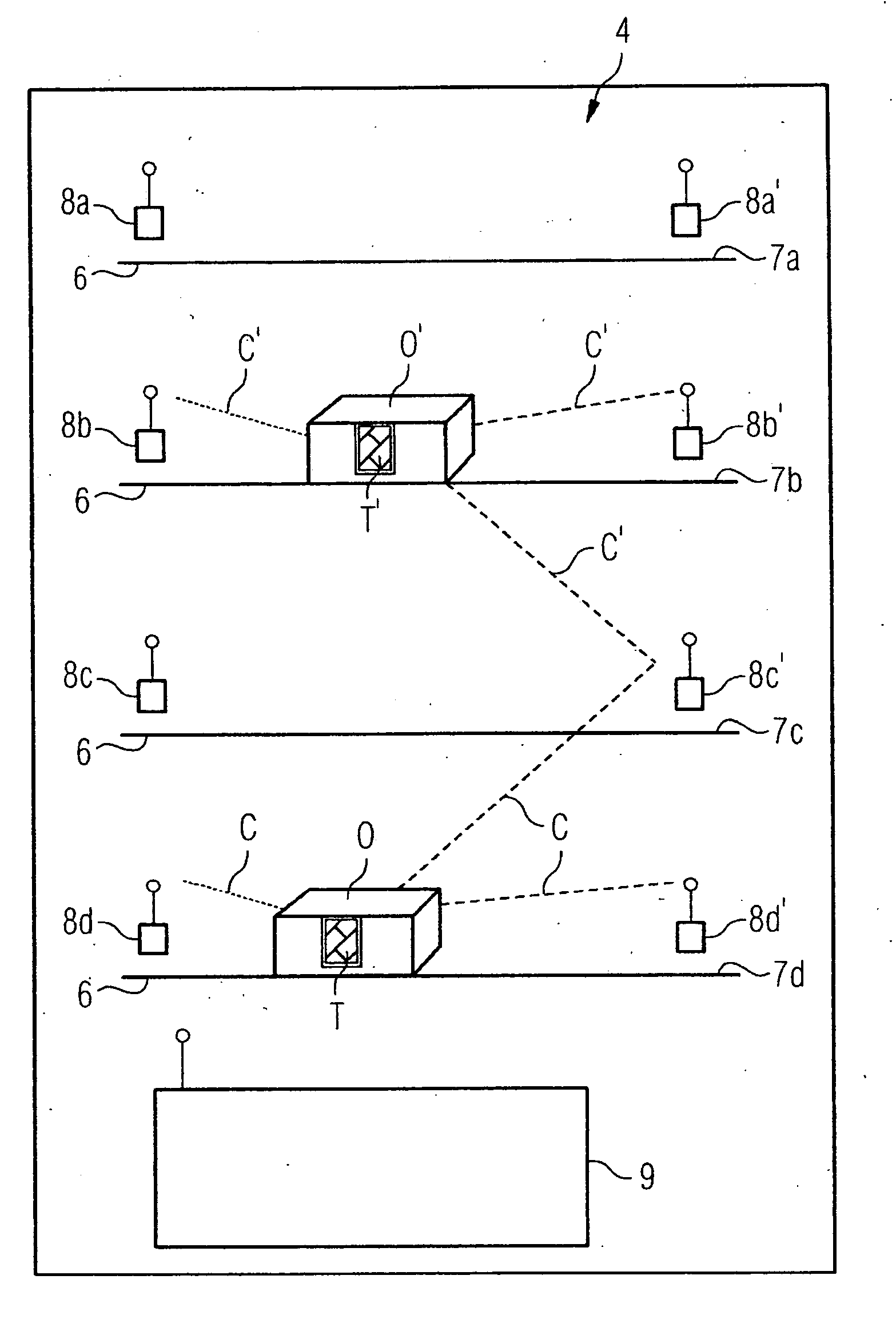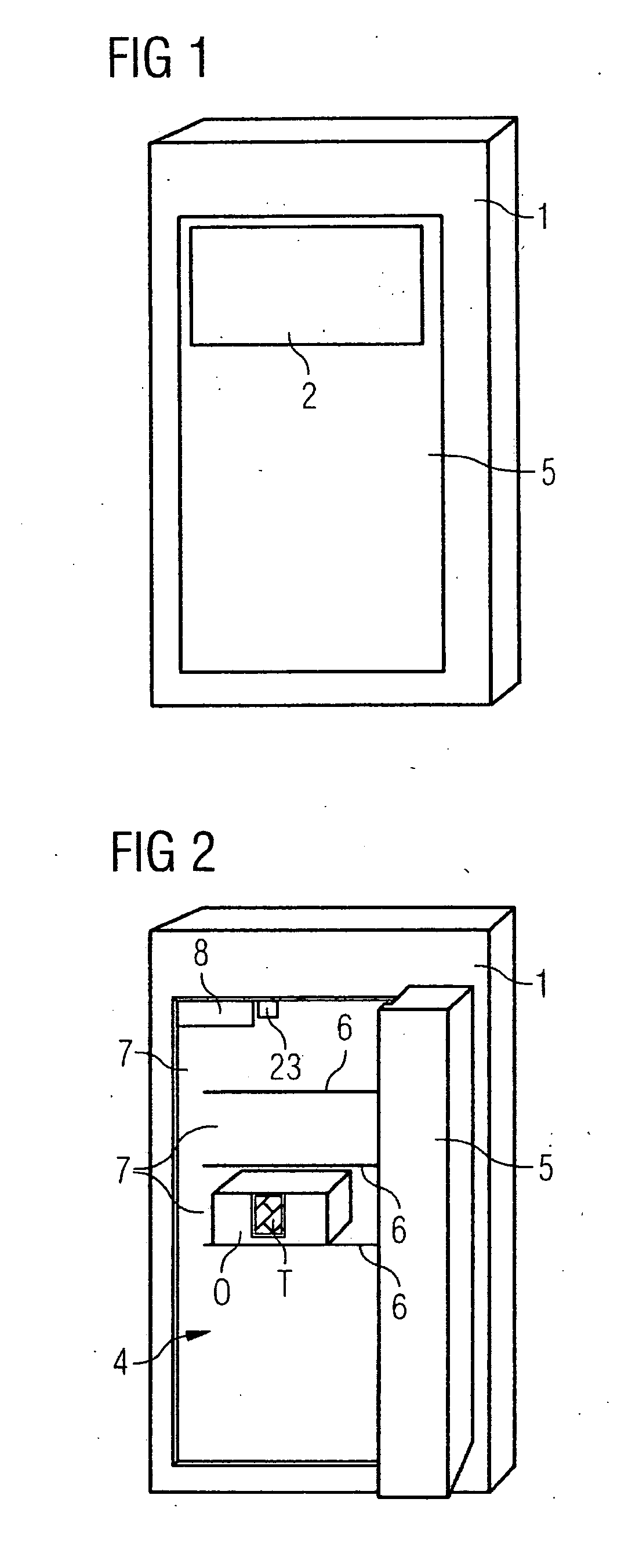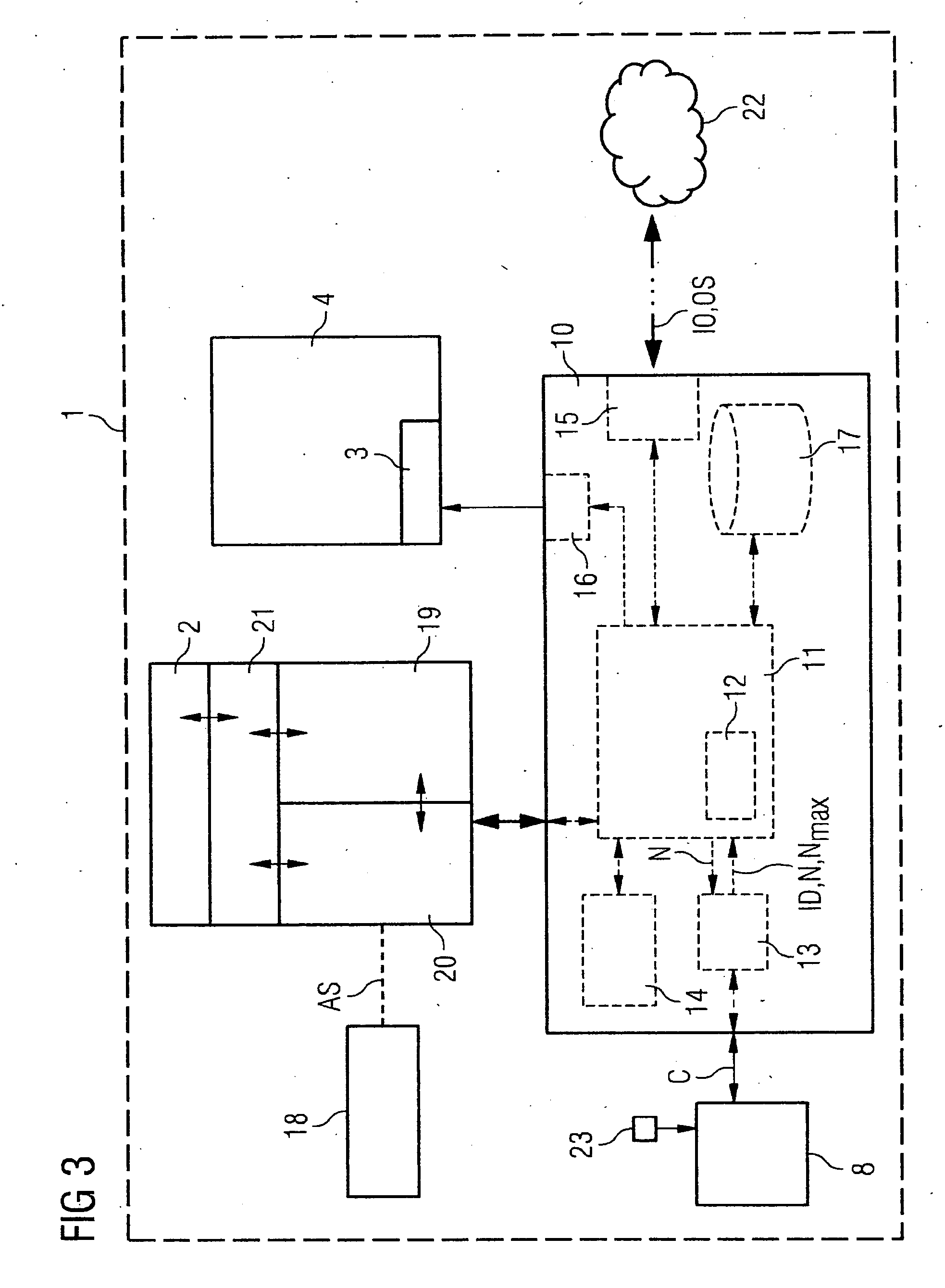Method and device for sterilizing medical objects
a technology for medical objects and devices, applied in chemical methods analysis, instruments, electric signalling details, etc., can solve the problems of shortening the life of medical objects, destroying or failing objects, and increasing material fatigue, so as to achieve less time-consuming effects
- Summary
- Abstract
- Description
- Claims
- Application Information
AI Technical Summary
Benefits of technology
Problems solved by technology
Method used
Image
Examples
Embodiment Construction
[0038]FIG. 1 shows a schematic diagram of a sterilization facility 1 in the form of a sterilization cabinet 1 with a display and control unit 2 disposed outside it, which an operator can use to operate the sterilization facility. A door 5 is located in the front area, which can be used to seal the sterilization chamber 4 within the sterilization cabinet 1.
[0039]FIG. 2 shows the sterilization cabinet 1 in the opened state. Inside the sterilization chamber 4 are a number of shelf levels 6 or drawers, which divide the sterilization chamber 4 into a number of sub-areas 7. Inside the sterilization device 1, in this instance in the upper left corner, is an RFID read / write facility 8. Next to this is an activation facility 23, for example a pressure switch, which is used to activate the RFID read / write facility 8 when the door 5 is opened.
[0040]Inside the sterilization facility 1 a medical object to be sterilized O is shown schematically in this instance as a box, to which an RFID tag T is...
PUM
| Property | Measurement | Unit |
|---|---|---|
| frequency | aaaaa | aaaaa |
| sterilization area | aaaaa | aaaaa |
| power | aaaaa | aaaaa |
Abstract
Description
Claims
Application Information
 Login to View More
Login to View More - R&D
- Intellectual Property
- Life Sciences
- Materials
- Tech Scout
- Unparalleled Data Quality
- Higher Quality Content
- 60% Fewer Hallucinations
Browse by: Latest US Patents, China's latest patents, Technical Efficacy Thesaurus, Application Domain, Technology Topic, Popular Technical Reports.
© 2025 PatSnap. All rights reserved.Legal|Privacy policy|Modern Slavery Act Transparency Statement|Sitemap|About US| Contact US: help@patsnap.com



